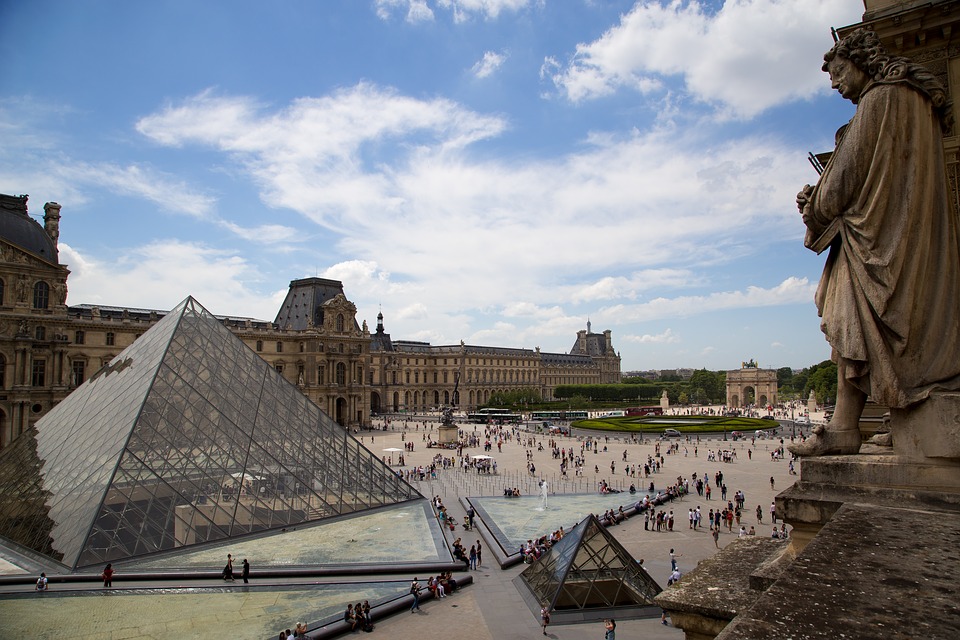Je suis heureux de voir revoir. Continuons notre visit de la capitale Française (I’m glad to see you again. Let us continue our visit of the French capital). In the last two posts, we visited virtuellement (virtually) la Tour Eiffel, l’Arc de Triomphe and la cathédrale Notre-Dame de Paris. Aujourd’hui nous allons visiter un des plus célèbres musées du monde: Le Musée du Louvre (Today we will be visiting one of the world’s most famous museums: The Louvre Museum).

Originally built as a fortress by King Philip II in the 12th century, in 1546 King François I (Francis I) transformed the Louvre into a palais somptueux (sumptuous palace) where he lived and housed his large art collection. Over the course of several centuries, additions were built by succeeding French kings to house their ever-growing art collections. In 1682, King Louis XIV moved his court to the newly built Palais de Versailles (Versailles Palace) just outside Paris. In the 19th century, Napoleon I and Napoleon III continued adding wings and galleries to the already massive structure and in the 1980s and 1990s, a vast complexe souterrain (underground complex) was created to expand and modernize the Louvre.
If you wish to see every piece of art housed in the museum, plan a visit durant plusieurs jours (lasting several days). Tickets are 12 € per person for the visite libre (free/open visit) where you are free to roam the museum at your leisure. Une visite guidée (a guided visit) is also available. However, if you don’t mind large crowds, le premier dimanche du mois et le 14 Juillet (the first Sunday of every month and July 14th) is gratuit (free), but make sure you arrive early because lines can be very long.
So what is there to see? The museum contains vast collections of priceless works of art from Antiquity up to 1848. Practically every artistic period and style is represented. Some of the most famous pieces include Leonardo da Vinci’s La Joconde (The Mona Lisa), the Nike of Samothrace, the Venus of Milo, the French Crown Jewels, the Law Code of Hammurabi, and much more. You can even visit the apartments of Napoleon III with their massive lustres (chandeliers) and meubles (furniture) in the Rococo style.
If you have read The Da Vinci Code by Dan Brown, you will recognize La Pyramide du Louvre made de verre et de métal (of glass and metal) in the courtyard. Opinions differ on the pyramid: some love it, some hate it, but it has become an iconic example of modern architecture within a traditional setting.
When speaking of art, no one can deny the significance of the Louvre. It has stood the test of time and earned its rightful place alongside the greatest museums of the world such as the Vatican Museum, the Smithsonian, the State Hermitage, the British Museum, and more.
Thanks to the Internet, you no longer have to leave your home to view many of the world’s greatest works of art. Visit Google’s Cultural Institute and enjoy high-resolution photographs of these works absolutely free.





